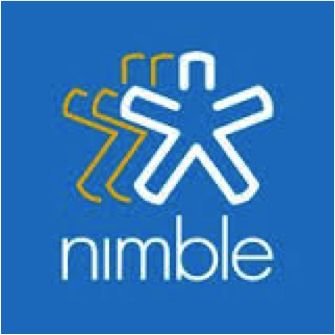
by twieberneit | Sep 13, 2020 | Analysis, Blog |
The News On September 10, 2020 Zoho announced Zoho Workplace, a new cloud based product bundle that is targeted at making a workforce more effective and efficient by bundling collaboration, productivity, and communication tools into one integrated set. As a part of this release Zoho enriched the applications that are part of Zoho Workplace with additional capabilities, following the vision of driving better business outcomes easier. Zoho Workplace consists of nine tightly integrated applications that are built on a common data model and that share a common dashboard and AI based enterprise search. The bundle is “centered around a full-featured business mail and office suite”. The nine applications Zoho Workplace consists of, are: Mail for business e-mail Cliq, as a messaging system Meeting for online conferencing Connect, a social intranet solution Writer for word processing Show for collaborative presenting Sheet for spreadsheets Workdrive as the cloud based document management system ShowTime for online training and/or webinars. Zoho did a study together with Beagle Research on what the main issues with current collaboration and productivity tools are. Results of this study include that applications that employees work with are “not intuitive and difficult to integrate”. Additional findings include that businesses often use different technology stacks which hampers productivity. Instead, they want “unified solutions that streamline complex processes”. Zoho Workplace is addressing this and as a result has seen a rapid adoption, “now supporting 2 million organizations, with 15 million users located across more than 150 countries. More than 25 percent of new Zoho Workplace customers have made the decision to switch over from G Suite and Microsoft”. The Bigger Picture...

by twieberneit | Jul 29, 2019 | Analysis, Blog |
The News Last week, on July 24, 2019 Salesforce announced adding conversation channels to its Salesforce Essentials offering with the goal of giving small businesses more personalized ways to interact with their customers. As usual, you can read the press release below or directly on the Salesforce web site. In a nutshell, Salesforce adds the ability to have conversations with Facebook Messenger, to get notifications when customers comment to posts and videos on Instagram or Youtube, and native phone support. All this can get set up with the help of simple guided walkthroughs. The overall goals are to speed up the setup and to offer a path for growth. The latter being offered by the fact that Salesforce Essentials is built on the same platform as Salesforce’s enterprise applications and is essentially an entry tier for small businesses. Still, talking to Melissa Meli, Director of Product Marketing for Salesforce Essentials, the emphasis is on easy. Salesforce Adds New Conversation Channels to Salesforce Essentials, Giving Small Businesses Personalized Ways to Interact with Customers With Salesforce Essentials, small businesses can easily adopt the world’s #1 CRM platform— designed to scale and grow with them New social, chat and phone capabilities in Salesforce Essentials empower small businesses to communicate with customers on their preferred channels—and can be deployed in just minutes Customers like G Photography, Mission.org and PepTalkHer rely on Salesforce Essentials to reimagine and grow their business SAN FRANCISCO—JULY 24, 2019—Salesforce [NYSE: CRM], the global leader in CRM, today delivered new conversation channels in Salesforce Essentials, the all-in-one CRM solution built specifically for small businesses. Salesforce Essentials empowers every small...

by twieberneit | May 28, 2019 | Analysis, Blog |
The future of Nimble is blue – Azure blue. The News This is not about the colour of hope (which is blue, at least, if you are a German, like me), but about the long pending final migration of Nimble to Azure. The company announced on May 22 that it has successfully migrated its leading SaaS Social Sales application from Amazon Web Services to Azure. According to the press release this migration was accomplished in less than four weeks without impact on Nimble customers or, as the press release stated “without a hitch”. With this move Nimble can now “tap into Microsoft’s world-class Azure platform and partner ecosystem to scale”. According to the press release the company reports that, Microsoft being “a global Nimble reseller, and promoting it as the simple CRM for Office 365, demand for the easy-to-use CRM for small workgroups is surging”. Then there are two further interesting pieces covered in the press release. For one: with this move Nimble also “accelerates the delivery of its upcoming 5.0 release using the Azure Platfrom as a Servce (…) and by integrating Common Data Services, Power BI, PowerApps, and Flow”. Nimble 5.0 shall deliver a “company wide team relationship manager that unifies contacts from siloed departments in sales, marketing, customer service, and accounting for Office 365 and G Suite users”. The release of Nimble 5.0 is targeted for June 2019. Second, Nimble emphasizes on the power of ecosystems by putting a spotlight on Nimble being the only ISV on Microsoft’s CSP Cloud Solution Provider marketplace that uses CSP to build a global distribution channel. Nimble does this by...

by twieberneit | Jan 28, 2019 | Analysis, Blog |
AI, IoT, and CRM, three acronyms. However, these three belong together and should not be treated or looked at separately. One important reason for this is that companies and organizations can provide significantly better service experiences and, more importantly, results, by combining the capabilities behind these acronyms. Good field service not only gets dispatched smartly but also equipped with the right parts and, ideally, in a proactive manner. This can get delivered by the combination of Field Service, AI, and IoT data. That’s why I found Salesforce’s early December announcement of having added a component “IoT insights” to its Field Service Lightning product quite interesting. As the press release said, this capability enables service agents and representatives to see IoT signals together with other CRM data, so that the triple p of personalized, proactive, even predictive service is possible. After all, Einstein is embedded into Field Service Lightning for quite some time now. Doing so, Salesforce wisely did not implement yet another IoT platform but enabled its system to ingest data from existing IoT platforms, thus sticking to the core competencies of the company. The solution helps in three areas: Enabling of early issue anticipation (rather than detection, which is responsive) and remote diagnosis Providing agents with more relevant information, to speed up issue resolution And automation via rules and workflows. Says Paolo Bergamo, SVP and GM, Salesforce Field Service Lightning: Let me first clarify that we’re not competing with IoT platforms from the likes of AWS IoT or Azure IoT. Our solution extends the value of these platforms – they provide streams of device data that then flow...

by twieberneit | Jan 15, 2019 | Blog |
The suite is back. I have said and written that a good number of times in the past few years. And that is a good thing (that the suite is back, not that I said it, of course), because one of the major challenges with a best of breed approach is integration. The suite is back, but it is in an incarnation that vastly differs from what we knew about suites back in the times before cloud computing and Salesforce brought back a supremacy of best of breed over the suite. Integrating different pieces of software from different vendors into one coherent whole is easily accounting for one third to one half of project budgets. And this part of the overall cost for implementing new software is often plaid down by best of breed vendors. Which is not a crime, especially if the benefits of the best of breed software outweigh the cost of integration. However. Often it does not. And not openly addressing cost of integration backfires. Always. Believe me. If you research my background well enough you will find out why you should. Little hint: I am not only writing about things. Another strong argument in favor of the suite is the platform war that is currently going on. Why? Simply, because a platform is not only a technical platform. It is more. A platform consists of mainly four pieces: a technical platform the ability of turning data into insight, an ecosystem, and productivity support. And, very importantly, a necessary capability that is provided by the technical platform is integration. Some other aspects include the provision of...






